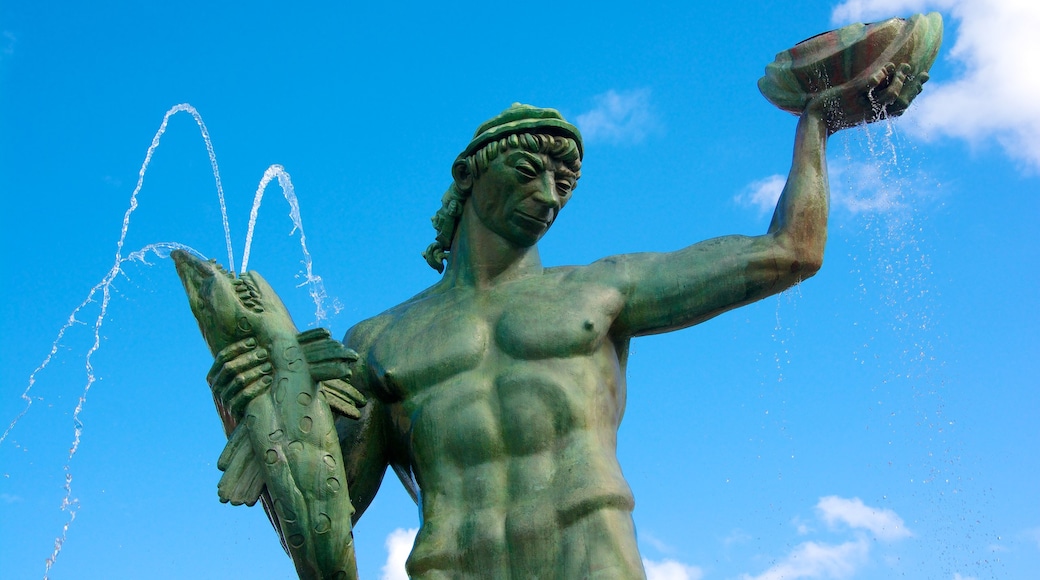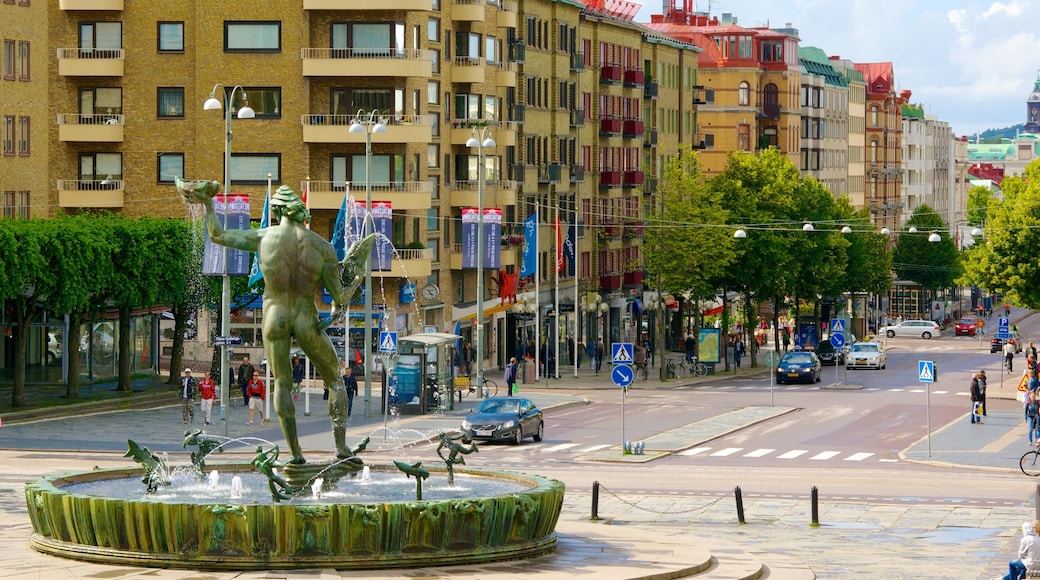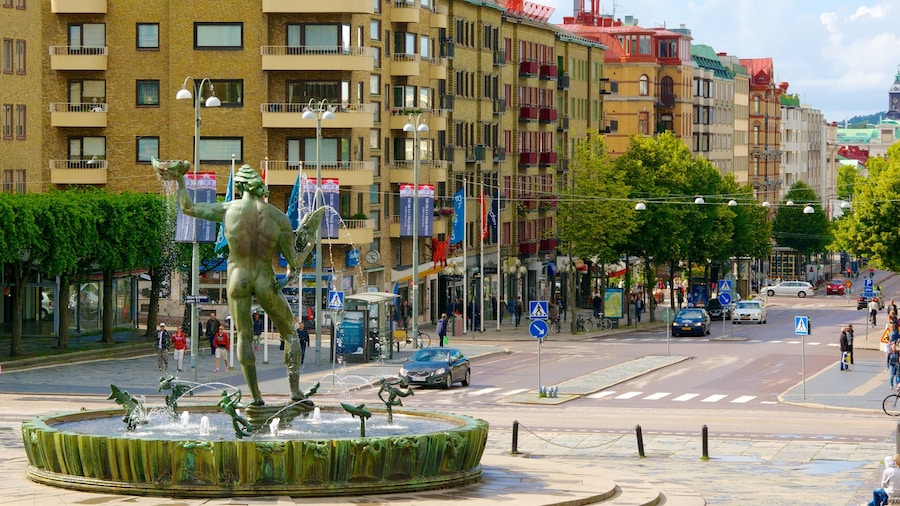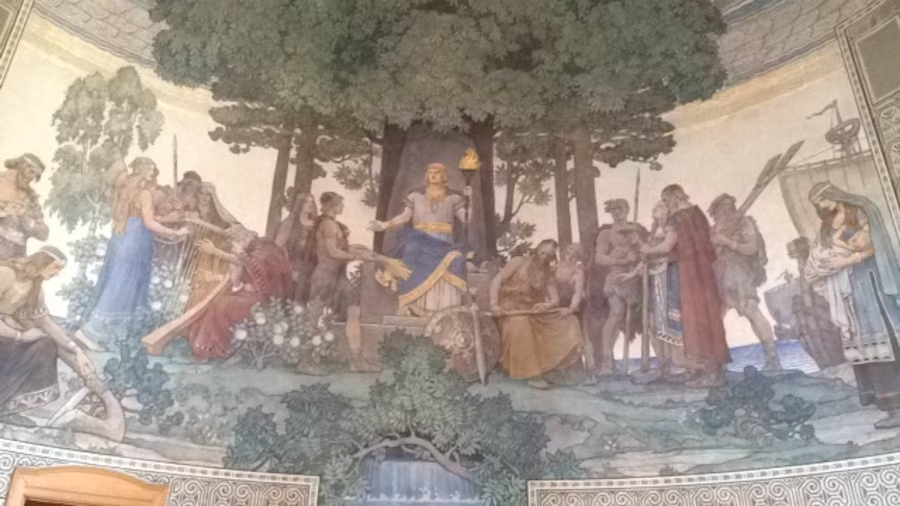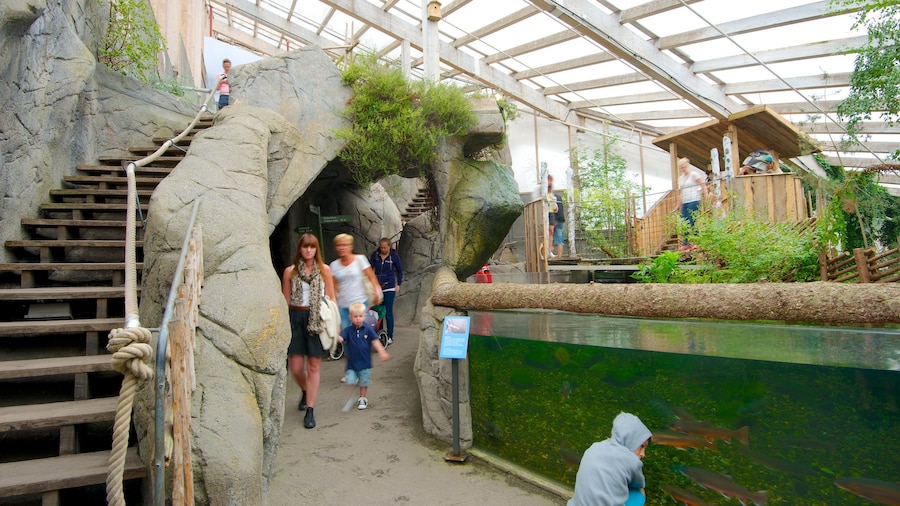Make your way into Gothenburg’s main square, Götaplatsen, and you will be drawn to the imposing figure of Poseidon standing proudly atop a fountain. The 23-foot (7-metre) statue was completed in 1931 by the Swedish sculptor, Carl Milles, and has become an icon for Gothenburg.
Poseidon is a fitting figure to watch over the maritime city of Gothenburg. As the Greek god of the sea, he hears sailors’ prayers for calm waters and safe returns. As if to reiterate his position as the master of the waters, Milles sculpted him proudly lifting a large fish and shell toward the heavens.
Milles was known for his intricate fountains and bold sculptures and this one is no different. His work in Scandinavia made him famous he was commissioned to design public water features in the United States shortly after revealing the Poseidon fountain. He ended up spending 20 years in America and his work can be seen all over the U.S.
Look closely at sides of the fountain basin to see carved reliefs of marine animals. Six small sculptures around the rim of the fountain shoot water jets towards Poseidon’s bare chest.
Sit on the steps of the fountain to enjoy the view of Avenyn, Gothenburg’s main street, and study the facades of the Gothenburg Museum of Art, the City Theatre and the Concert Hall. All three buildings were built within ten years of the statue’s design, which gives the square a uniform architectural feel.
For a keepsake photograph of Gothenburg, position the Museum of Art’s high pillars and wide steps in the background of Poseidon’s proud shape. Come back at night with your tripod to capture the statue lit up with soft spotlights from underneath, creating a mystic effect that is further enhanced by the fountain’s spray.
Poseidon is clearly visible from a distance due to the fountain’s elevated position and the statue’s imposing height. It is best to walk here from other central city attractions, or take a tram or taxi, because the square is a pedestrian hub and parking is limited and expensive.



